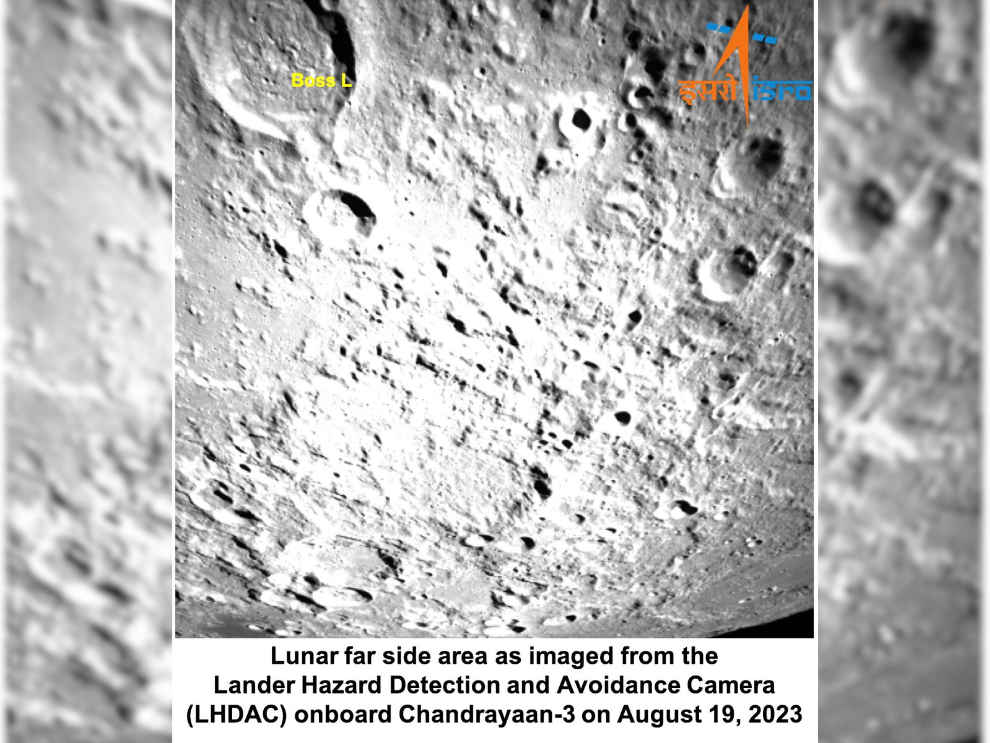The Indian space program is stronger than it has ever been. With the Indian Space Research Organisation (ISRO) building space machinery at costs that are cheaper than that of Hollywood movies, the Indian space program has received attention and appreciation from people all over the world. In its latest feat, ISRO has successfully launched India’s latest exploratory mission to the Moon, Chandrayaan-3. The mission has already started showing results, as ISRO released the first pictures from the mission, which were of the Lunar far side area on the surface of our satellite celestial body.
Chandrayaan-3 was launched on July 14, 2023, from the Satish Dhawan Space Centre. The carrier rocket or launch vehicle, to be technically precise, for the mission, Launch Vehicle Mark-3 (LVM3) is carrying the Pragyan rover. The rover is projected to be active on the Lunar surface for 1 Lunar day, equivalent to about 29 and a half Earth days. This mission comes on the back of an unsuccessful attempt at a similar mission, the Chandrayaan-2. The main objective of the Chandrayaan-3 mission is to demonstrate the soft, safe landing capabilities on the surface of the moon.
 Image Source: ISRO via Twitter Chandrayaan-3: Why showcase the landing abilities?
Image Source: ISRO via Twitter Chandrayaan-3: Why showcase the landing abilities?
The images released by ISRO of the Lunar far side have been captured by Lander Hazard Detection and Avoidance Camera (LHDAC) on board the mission module. These images are crucial, keeping in mind the main objective of the mission. The LHDAC is responsible for locating a safe landing area on the surface of the moon, most importantly, as stated by ISRO, “without boulders or deep trenches”. Now if the space agency is able to successfully execute a soft and safe landing of the Vikram rover, it will be a monumental event in the history of the Indian space program.
Chandrayaan-3 Mission: Here are the images of Lunar far side area captured by the Lander Hazard Detection and Avoidance Camera (LHDAC). This camera that assists in locating a safe landing area -- without boulders or deep trenches -- during the descent is developed by ISRO… pic.twitter.com/rwWhrNFhHB
— ISRO (@isro) August 21, 2023This mission is important because, if we are to ever set foot on the Moon with the intent of setting up a civilised society, having technology that can safely transport crucial and fragile goods from our home planet would be extremely important. And, adding to the cost efficiency of the Indian space program as a whole, even other countries and agencies could be looking towards India to carry out their mission.
from Mobile Phones News https://ift.tt/jyvxMI9
Comments
Post a Comment